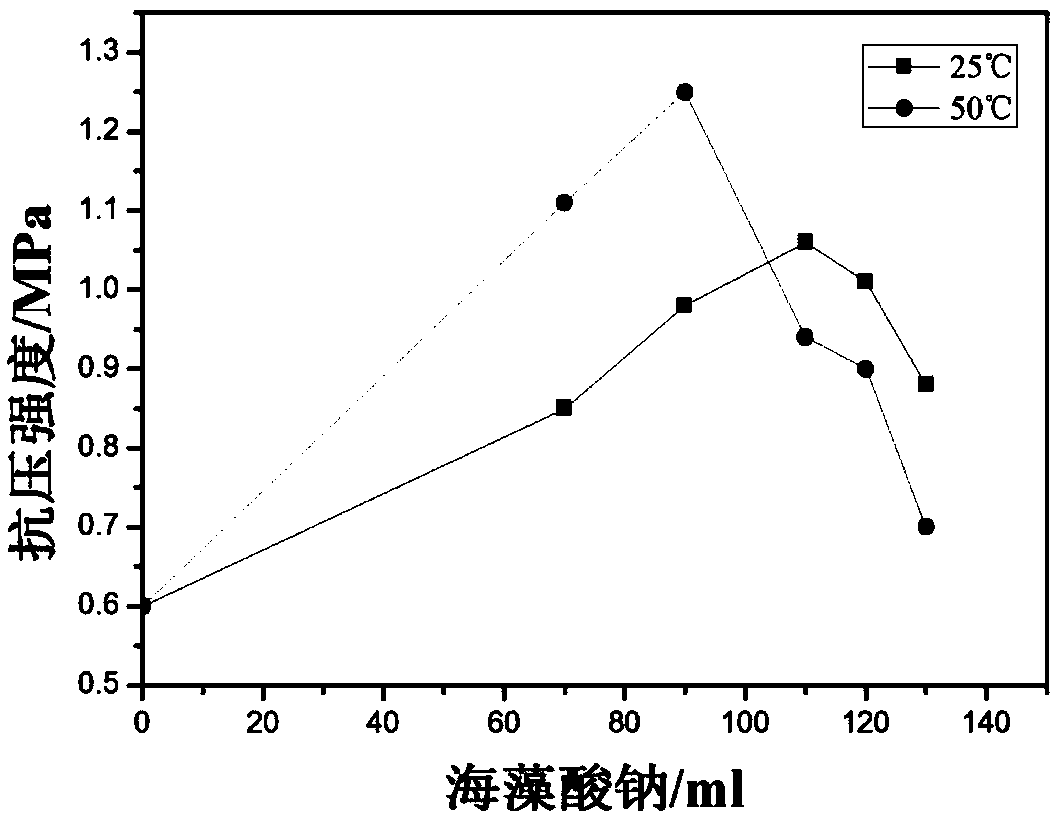Method of using urban domestic waste incinerator residue to produce lightweight foam concrete
A technology of municipal solid waste and incineration slag, which is applied in the field of utilization of municipal solid waste incineration slag regeneration resources, can solve problems such as low strength, high water absorption, and restrictions on the popularization and application of foam concrete, and achieves improved compressive strength, reduced pore size, The effect of improving the uniformity of pore distribution
- Summary
- Abstract
- Description
- Claims
- Application Information
AI Technical Summary
Problems solved by technology
Method used
Image
Examples
Embodiment 1
[0023] Step 1: Naturally weatherize the municipal solid waste incineration slag in the open air, and the natural weathering time is 30 days. Then the weathered slag was mixed with ultrapure water (mass ratio 1:3), ultrasonicated for 2 hours (power 100W), filtered, and dried at 100°C for 12 hours in a blast drying oven. The slag is then ball milled and screened until the particle size is less than 200 mesh to obtain water-washed slag.
[0024] Step 2: Pour 2kg of ash, 1.6kg of cement, and 80g of sodium sulfate into a mixer according to the mass ratio, mix evenly, and stir for about 5 minutes.
[0025] Step 3: Prepare a sodium alginate solution with a mass concentration of 1%, add 0.9 L of 50° C. ultrapure water and 0 mL of the sodium alginate solution into a blender, and stir for 2 min.
[0026] Step 4: While stirring, add 178mL of hydrogen peroxide, that is, foaming agent. The mass ratio of hydrogen peroxide with a concentration of 30% is 5% of the total material. Continue st...
Embodiment 2
[0029] Step 1: Naturally weatherize the municipal solid waste incineration slag in the open air, and the natural weathering time is 30 days. Then the weathered slag was mixed with ultrapure water (mass ratio 1:3), ultrasonicated for 2 hours (power 100W), filtered, and dried at 100°C for 12 hours in a blast drying oven. The slag is then ball milled and screened until the particle size is less than 200 mesh to obtain water-washed slag.
[0030] Step 2: Pour 2kg of ash, 1.6kg of cement, and 80g of sodium sulfate into a mixer according to the mass ratio, mix evenly, and stir for about 5 minutes.
[0031] Step 3: prepare a sodium alginate solution with a mass concentration of 1%, add quantitative 50°C ultrapure water 0.83L and 70mL sodium alginate solution into a blender, and stir for 2 minutes.
[0032] Step 4: While stirring, add 178mL of hydrogen peroxide, that is, foaming agent. The mass ratio of hydrogen peroxide to the total material is 5%, continue stirring for about 20 sec...
Embodiment 3
[0035] Step 1: Naturally weatherize the municipal solid waste incineration slag in the open air, and the natural weathering time is 30 days. Then the weathered slag was mixed with ultrapure water (mass ratio 1:3), ultrasonicated for 2 hours (power 100W), filtered, and dried at 100°C for 12 hours in a blast drying oven. The slag is then ball milled and screened until the particle size is less than 200 mesh to obtain water-washed slag.
[0036] Step 2: Pour 2kg of ash, 1.6kg of cement, and 80g of sodium sulfate into a mixer according to the mass ratio, mix evenly, and stir for about 5 minutes.
[0037] Step 3: Prepare a sodium alginate solution with a mass concentration of 1%, add quantitative 50°C ultrapure water 0.81L and 90mL sodium alginate solution into a blender, and stir for 2 minutes.
[0038] Step 4: While stirring, add 178mL hydrogen peroxide, i.e. foaming agent, continue to stir for about 20s, immediately pour the mixed slurry into the prepared 4cm*4cm*4cm mold, cove...
PUM
| Property | Measurement | Unit |
|---|---|---|
| particle size (mesh) | aaaaa | aaaaa |
| compressive strength | aaaaa | aaaaa |
Abstract
Description
Claims
Application Information
 Login to View More
Login to View More - R&D
- Intellectual Property
- Life Sciences
- Materials
- Tech Scout
- Unparalleled Data Quality
- Higher Quality Content
- 60% Fewer Hallucinations
Browse by: Latest US Patents, China's latest patents, Technical Efficacy Thesaurus, Application Domain, Technology Topic, Popular Technical Reports.
© 2025 PatSnap. All rights reserved.Legal|Privacy policy|Modern Slavery Act Transparency Statement|Sitemap|About US| Contact US: help@patsnap.com

